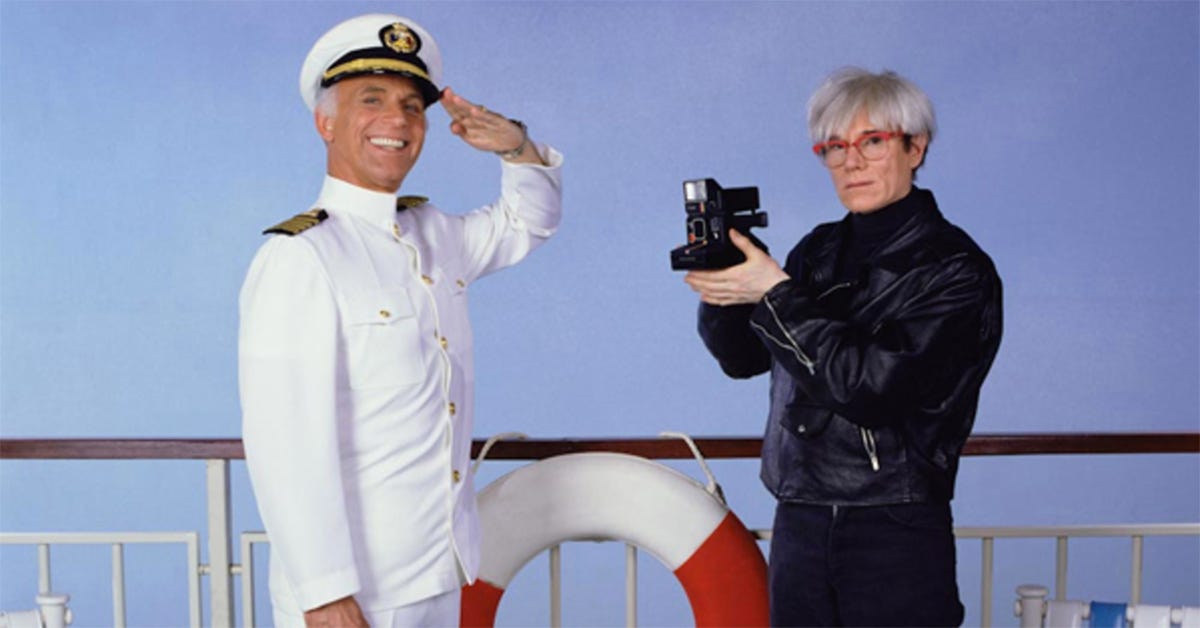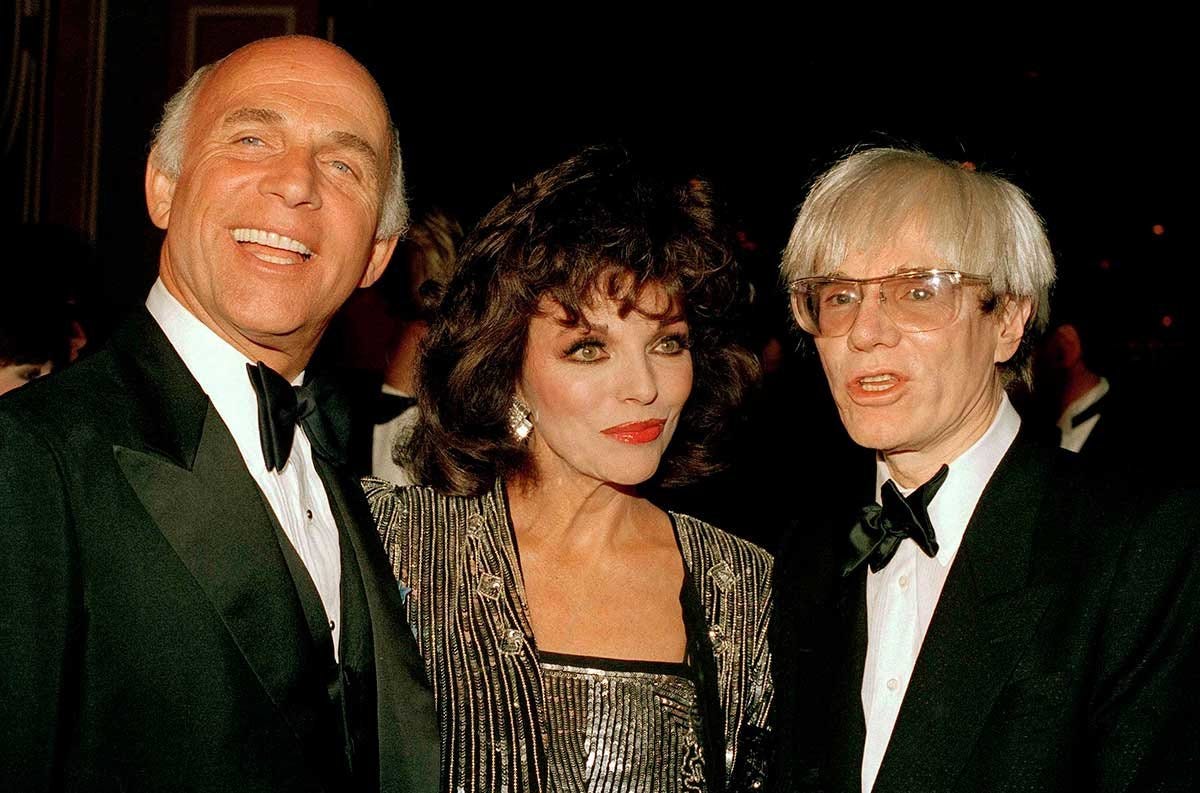https://substack.com/@psychotronicmovies
When Andy Warhol was on THE LOVE BOAT
Before grant money for artists, Picasso, Dali and Warhol created a brand name and lived it. It all came together for Warhol on THE LOVE BOAT.
Andy Warhol astounded critics in the art world when he took mundane objects like Brillo pad boxes and turned them into fine art.
Ten things you don't know about Warhol's Brillo boxes
Art had been unchanged for decades when Warhol did art of Campbell’s soup cans and Brillo boxes (made of plywood) instead of nudes and flowers in a vase. The art didn’t sell at the time, but he ignited a controversy about what art is that still resonates to this day.
The Brillo boxes were the first artworks created from Warhol’s Factory. The Factory was made up of a team who worked with him to create the art, served as the launching pad for a rock band THE VELVET UNDERGROUND, drew people with his parties that would serve as his fan base and created a look that like Dali’s moustache, would become part of his brand.
The Velvet Underground records didn’t sell, but they would become the most influential group in rock and roll.
Warhol was the first to turn networking into a way to get portrait art sales of the rich and famous using primary colors. The term networking didn’t exist but he did it first. His most famous quote "In the future, everyone will be world-famous for 15 minutes.", he didn’t actually say. Warhol's alleged quotation first appeared in print in a program for his 1968 exhibit at the Moderna Museet in Stockholm, Sweden. In the autumn of 1967, Pontus Hultén (the director for the Moderna Museet) asked Olle Granath to help with the production of the exhibit, which was due to open in February 1968. Granath was tasked with writing a program for the exhibit, complete with Swedish translations. He was given a box of writings by and about Warhol to use for the program. Granath claims that submitting his manuscript, Hultén asked him to insert the quote: "In the future, everyone will be world-famous for 15 minutes." To which Granath replied that quote was not in the material he was given. Hultén replied, "if he didn’t say it, he could very well have said it. Let’s put it in." - Wikipedia. When reality TV appeared, the words became true.
Warhol made films and he “produced” films, threw parties and went to them, extended his brand to a TV show and magazine. He knew that he had to be on THE LOVE BOAT and it took 5 years to do it:
Quote:
On Friday, August 31, 1979, Andy Warhol records in his diary that he took a cab to Elaine’s to “meet the guy who might get me a guest appearance on The Love Boat.” But nearly five years pass before he writes that the writers are working on his episode; with the shooting dates set, “I started to get scared, I don’t know if I can go through with it.” A couple of months later, as the appointed time approaches, he hears the plot: “There’s a girl on the boat named Mary with her husband, and she used to be a superstar of mine, and she doesn’t want her husband to know that she used to be ‘Marina Del Rey.’ And I just have a few lines, things like ‘Hello, Mary.’ But one of the lines I have to say is something like ‘Art is crass commercialism,’ which I don’t want to say.”
Whatever his objections to the script, Warhol doesn’t seem to have been an especially difficult participant, of whom The Love Boat must have had more than a few in its 250 episodes. During its run on ABC from 1977 to 1986, the series became an American pop-cultural phenomenon of a scale difficult to comprehend today. But as a connoisseur of American pop culture, Warhol would have comprehended it fully. By the time of his appearance in October 1985, The Love Boat had entered its ninth season, presumably hungrier than ever for attention-grabbing guest stars; on “his” episode, Warhol shares that billing with, among others, Milton Berle, Happy Days‘ Tom Bosley and Marion Ross, and Andy Griffith (who, Warhol notes, “seems bitter to be on The Love Boat“).
Photo: LOVE BOAT after party with Joan Collins.
“My Stephen Sprouse jackets were there on the wardrobe rack,” Warhol writes in his diary during the shoot. “When I wear them, I think I finally look like people want Andy Warhol to look again.” That must have been true of the shiny silver number he wears in his first scene of the episode, when first he rolls up with his “entourage” to the ship’s reception desk. “As we’re walking off, the Love Boat girl asks Raymond St. Jacques, ‘How does an artist know when a painting is really successful?’ And he says, ‘When the check clears.'” But on one take “they did it wrong and it was better — she said, ‘When is a painting really finished.'” Unfortunately, that version of the line seems to have been a bit too Warholian for the Pacific Princess. Unquote
When Warhol was on THE LOVE BOAT
Warhol understood that modern artists had to make marketing part of their art. That belief still makes people furious at Warhol. And now ladies and gentlemen:
For our paid subscribers, there is more on Warhol. A terrific documentary on his life, a montage of his screen tests and his 8 hour plus film EMPIRE. I actually saw EMPIRE at a theater in Atlanta run by George Ellis (the horror movie host known as Bestoink Dooley) and no one actually sat through all 8 hours of one camera shot of the Empire State building taken over 8 hours. The audience congregated in the lobby to talk about the experience, periodically going back into the theater to see more of the film.
If you enjoy the world of psychotronic movies and music, join us on Facebook. That’s psycho as in horror and tronic as in electronic or science fiction. We also cover the realm of pop culture others consider trash. Join the film society on Facebook by clicking the underlined link.
If you like our spin-off here on Substack, THE GLOBAL PSYCHOTRONIC FILM SOCIETY, subscribe!
Keep reading with a 7-day free trial
Subscribe to






No comments:
Post a Comment